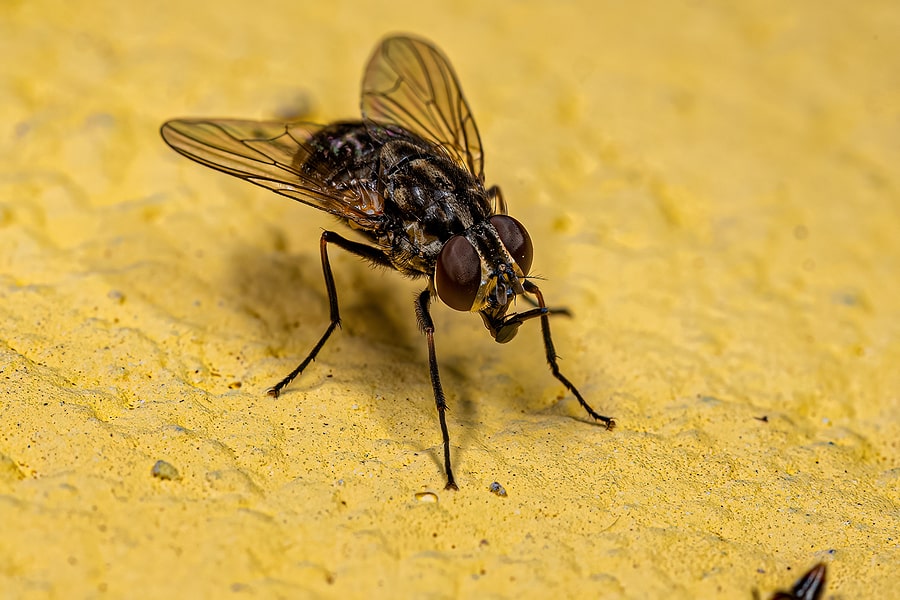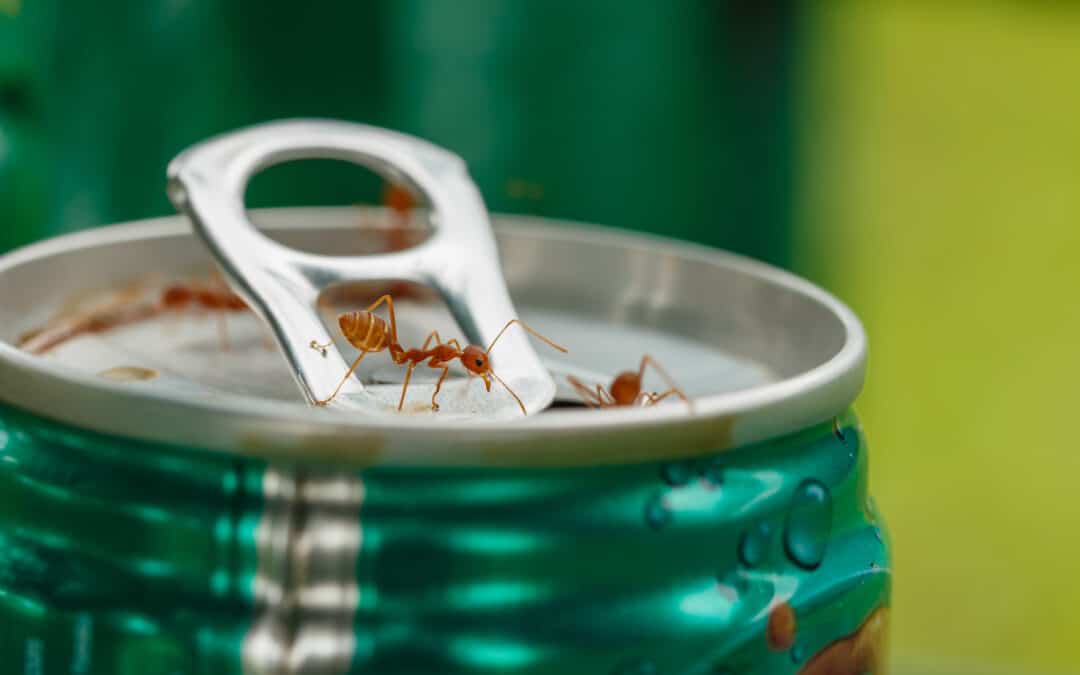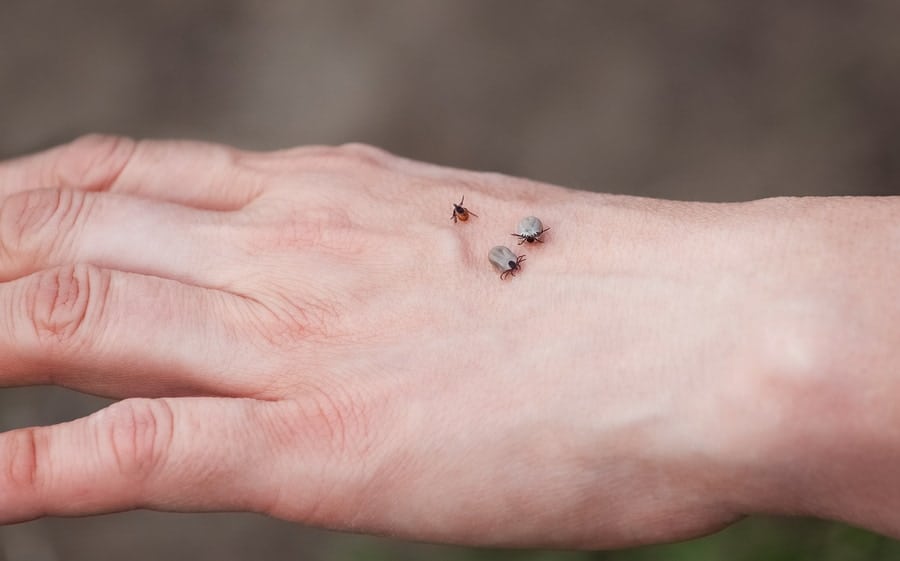READY TO GET STARTED?
REQUEST A FREE ESTIMATE
Fill out the form below or call (888) 466-7849 for a free, no-obligation estimate.

Whether inside or outside, flies can be a huge annoyance. These small pests seem to find their way back into your space after you’ve already swatted them away multiple times! At a glance, you might be able to tell what kind of fly it really is, but they can all look the same. Each type of fly has its own set of characteristics. Let’s break down the common flies you might see in your Jasper, Alabama home.
Being the most common out of all the flies, this easily identifiable pest is widespread throughout the United States. House flies can be spotted with red eyes and gray, hairy bodies. These types of flies don’t have teeth or stingers, so they feed off liquids found from human food, animal carcasses, and garbage.
While they can’t sting humans, they can spread more than 100 different pathogens including salmonellosis, typhoid, and tuberculosis. They also contaminate food surfaces by spreading diseases picked up on their legs and mouths when feeding on any trash or feces.
These oval-shaped insects are known for rapidly reproducing and can be found indoors year-round. Fruit flies are attracted to and eat rotting food; more specifically they tend to gravitate towards fruits and vegetables. They are known to breed in dark, moist areas like drains, disposals, and trashcans. They also lay around 500 eggs that can hatch in as little as 24 hours.
These pests also don’t sting or bite, but they can contaminate foods with dangerous bacteria and disease-causing pathogens.
These moth-like flies are commonly found in dark, damp conditions, like drains. Drain flies don’t bite, but their presence can aggravate asthma in some people. These household pests appear light gray to tan with a dark border around their wings.
If you have an infestation of any species of fly in your Jasper, Alabama home, then contact your local pest control company to discover a treatment and prevention plan best for you!

The last thing you want to find in your pantry is pests. Known as pantry pests, these types of insects like to invade your stored food products and lay their eggs inside. What kind of creatures would want to invade our stored food? Let’s break it down.
Pests like beetles, weevils, and moths are the most likely culprits to invade your pantry. Although not the only kind to invade, these are the most common types that you will see and they include saw-toothed grain beetles, Indian meal moths, rice weevils, and drugstore beetles.
To know if you are dealing with a pantry pest infestation, be sure to check boxes of food for unusual things like eggs, larvae, and live beetles, moths, or weevils. These pests won’t be exclusively in open boxes, so make time to check most boxes of food.
There are two ways that these pests can find their way inside your Tennessee home. The first way involves flying or crawling in through exterior windows, doors, cracks, crevices, and other openings. The second way is coming in with your recently purchased dry food products. Keeping these in mind, here are a few pantry pest prevention tips to keep them away:
If you believe your pantry has been infiltrated by pantry pests, then give your local pest control company a call today for a free inspection!

There are several types of ants that can infiltrate your Tennessee home. Some of the most common are carpenter ants, Pharaoh ants, and odorous house ants. If you aren’t sure what kind you’re dealing with, here’s a quick breakdown of these three:
Give your local pest control company a call today for a FREE inspection!

Spring season brings fresh air, warmer weather, and pests! Because of spring’s climate, household pests, including ants, roaches, mosquitoes, termites, rodents, and other pests start emerging from hibernation, looking for a food source and a place to nest. Before these pests emerge in droves, now is the perfect time to prevent them. Check out our tips on keeping unwanted spring pests away from your Tennessee home!
The smallest crack, crevice, or hole can let pests inside your home. Check around the exterior of your home, including your foundation, pipes, windows, doors, and HVAC units for these areas. Cockroaches, rodents, wasps, ants, and more will gain access and cause several problems in your home. If you notice any openings, seal them tightly with caulk. For doors, consider utilizing a sweep to seal the gap between the floor and the door. Utilize screens on doors and windows and make sure they’re always in good repair.
The combination of warmer weather and standing water will attract pests like mosquitoes and roaches to your property. Standing water is a major pest attractant and allows them to multiply and thrive, making it essential to remove it. Check your exterior and interior for leaks. Even dripping faucets and loose fixtures can attract pests. Check your yard for any items that could collect water and remove them, including flowerpots, old tires, tarps, toys, etc. Also, consider enclosing your crawlspace to help reduce moisture and control temperatures inside your home.
Many pests will utilize our firewood to hitchhike their way inside our homes. Place and store your woodpiles at least 20 feet away from your home. For extra protection, consider placing them in plastic containers with lids and elevate them off the ground to prevent termites and roaches from living in them. Before you bring it indoors, inspect it for pests and brush them off.
Starting early on your spring cleaning could pay off in keeping pests away! Consider starting at the lowest level of your home and working your way up to declutter. Clean the floors, dust, sweep, mop, vacuum, and remove unnecessary items from your closets and drawers. Get rid of old newspapers and cardboard boxes in storage, as these can attract rodents looking for a place to nest. In your yard, remove old tree stumps, twigs, and other debris. Likewise, rake up all the leaves and continue mowing on a regular basis.
Mice and rats are looking for food to survive, invading our kitchens to find it. It’s important to clean your kitchen and safely store leftover food. After each meal, wipe down your counters and clean up any leftover crumbs or spills. On a regular basis, sweep and mop your kitchen floors, and don’t forget to clean under your appliances too. Take your garbage out regularly, using trashcans with lids. When storing food, make sure you utilize airtight containers.
While utilizing these pest prevention tips will always help keep bugs from invading your home, sometimes it’s best to call a professional for extra protection. Your local pest control company can assess your home, identify any sources of pest problems, and provide you with a pest control and prevention plan.

A household pest is any undesired animal that has a history of living, invading, causing damage to, eating food from, acting as a disease vector for, or causing any other harm to a human habitat. While most are considered a nuisance, household pests become dangerous when they pose a risk to health, property, or lifestyle.
While they can be common year-round, some are common in the spring months. Here are a few common spring pests you can find in your Georgia home:
Termite swarming season begins in the springtime. Swarming season is when young termites leave their current colony and go off to find mates and establish new colonies. If you begin to see swarmers, it might mean a colony is nearby.
Ticks are problematic to humans and pets because they spread diseases like Lyme disease and Rocky Mountain spotted fever. You might begin to see an increase of tick bites in the springtime. The mild winters in Georgia don’t help with keeping ticks away for long, so you should always be aware of ticks at any time of the year.
With heavy rainfall in the early spring, you can expect to see ants finding their way inside your home. They will begin to search for food and water, which your home has plenty of.
These pesky pests will find their way inside once the weather begins to warm up. They can spread many pathogens by picking them up on their feet when landing on different items.
If you’re ready to begin prevention of these spring pests, reach out to your local pest control company to receive a free quote and the best plan of action to keep pests away!